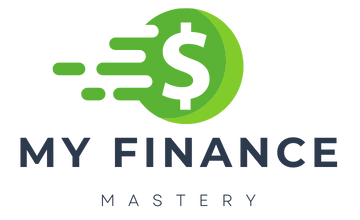Your Money Working Harder
The average American with credit card debt carries a balance of approximately $6,354, according to USA Today. But the news is even worse in some states like Alaska, New Mexico, and Louisiana, according to an analysis of credit card debt from creditcards.com. Consumers in these three states carried an average of $10,685, $8,323, and $8,110 in credit card debt, respectively, as of 2017.
This is unfortunate, but it’s not completely unexpected. It’s easy to lean too hard on a credit card when you face a job loss or a loss in income, and high interest rates don’t help matters much. The average credit card today carries an APR of well over 17%. With so much interest charged on revolving credit card debt, it’s difficult to make a dent in the principal of your balance. This often leaves people languishing in debt for years, and even racking up more debt over time.
Consumers use many strategies to get out of debt, one of which involves applying for balance transfer cards. With a balance transfer card, you qualify for 0% APR for a limited time — usually 12 to 21 months. However, you’re normally required to pay a balance transfer fee of 3% or 5% of your balance, and the introductory offer won’t last forever.
Some people use balance transfer cards to successfully pay down debt at 0% APR, but others simply make the minimum payments and never make real progress against their debts. Those consumers usually end up exactly where they started once their card’s introductory offer ends — with plenty of debt and a crushing APR.
There may be a better, more predictable way out of debt, however, and it involves a personal loan. (See also: 5 Times Personal Loans May Be Better than Credit Cards)
How a personal loan can help you climb out of debt
Applying for a new loan to work your way out of debt may go against the grain of common sense, but there are plenty of reasons a personal loan can work. For starters, personal loans come with low fixed interest rates that never change — even as low as 4.9% APR for consumers with good credit. Second, personal loans have fixed repayment schedules that tell you exactly when you’ll become debt-free.
Because personal loans have fixed rates and fixed repayment terms, you also have a fixed monthly payment that stays the same. This is much different from the way credit cards work since your payment will change based on your APR and how much you owe.
With a personal loan to pay down debt, you know exactly what you’re getting into. You know how much you’ll need to pay each month, when your loan will be paid off, and what your interest rate will be the entire time. The best part is, a personal loan is not a line of credit you can borrow against. So once you use your loan proceeds to pay off and consolidate your credit card bills, you won’t have the option to use your loan to rack up more debt. (See also: 10 Things You Need to Know Before Taking Out a Personal Loan)
How to do it the right way
If your goal is getting out of debt this year, a personal loan could be exactly what you need. But you’ll be in the best position to help yourself if you go about repayment the right way.
Compare personal loan offers
Personal loans are offered by large financial institutions like banks and credit unions as well as several online lenders. Because there are so many options to get a personal loan, your first step is shopping around to compare offers in terms of their interest rates and fees.
The best personal loans come without an origination fee, any application fees, or hidden fees. If you want to shop around among multiple lenders in one place, you can also check out LendingTree. This website lets you fill out a single loan application and get offers from multiple banks and lenders in one place. (See also: 5 Personal Loan Fees You Should Never, Ever Pay)
Find your best match now with this handy comparison tool. Select the type of loan you’re looking for, the amount, your credit rating and state, to see the best options available for you.
Create a spending plan
Once you’ve shopped for a personal loan, you’ll have an idea of your new monthly payment. At that point, it’s crucial to create a monthly budget or spending plan to ensure you can stay on top of your new loan.
Sit down with your bank statements and figure out exactly how much you earn and how much you owe, including your new personal loan, housing costs, and other bills. From there, you should look for ways to reduce your spending. That may mean dining out less often, cutting cable for a while, or going on a spending freeze. Whatever you do, make sure you have a grasp on how much you can afford to spend each month while keeping up with all your expenses.
Stop using credit cards
Finally, don’t forget that you have to stop using credit cards! The importance of this step cannot be overstated.
Paying off your credit card debt with a personal loan can put you in a precarious position where you’re tempted to start using credit cards again. But if you start using credit, you’ll likely rack up even more debt balances you’ll have to pay off.
Your best bet is putting your credit cards away for safekeeping and sticking to cash or debit instead. To get out of debt — and stay out of debt — you must learn to live within your means. Not using credit cards is the only way to ensure you’re living a lifestyle you can actually afford.










